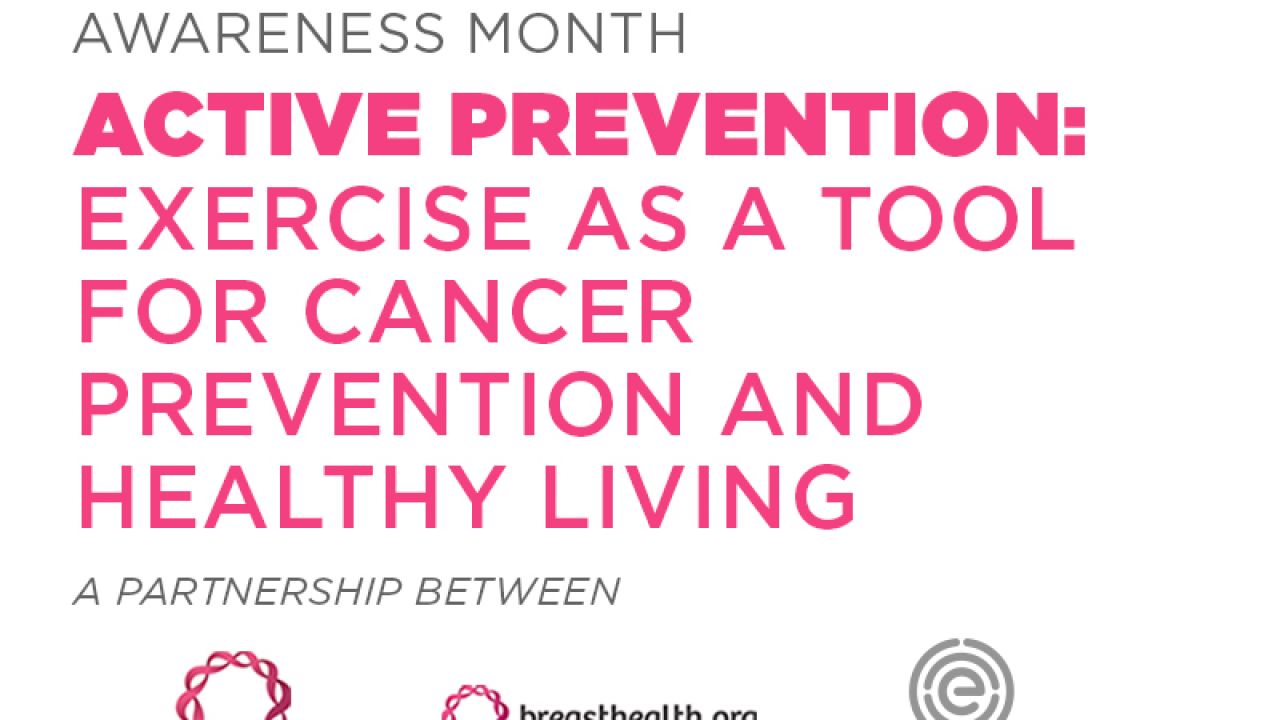
Exercise and physical activity offer numerous benefits to your mental and physical health. According to the Centers for Disease Control and Prevention, physical activity helps control your weight, lessen your risk of cardiovascular disease, reduce your risk of type 2 diabetes and metabolic syndrome, improve your mental health and mood, strengthen your bones and muscles, lower your risk of some cancers — and the list goes on.
Many of our ancestors exerted themselves all day. They didn’t need more exercise to avoid the risk for certain diseases and obesity. Today, more than two-thirds of the adults in the U.S. are considered overweight or obese. They are being urged to exercise to reverse the impact of a sedentary and unhealthy lifestyle.
As Breastcancer.org explains, “An unhealthy lifestyle, in particular being overweight, is associated with an increased risk of breast cancer, especially for women after menopause. Fat tissue is the body’s main source of estrogen after menopause, when the ovaries stop producing the hormone. Having more fat tissue means having higher estrogen levels, which can increase breast cancer risk.”
Exercise may be beneficial for breast health for more reasons than weight loss alone.
A study published in the June 2016 edition of JAMA Internal Medicine pooled physical activity information on 1.4 million people. It found that higher levels of exercise were associated with reduced risks of 13 cancers, including a drop of up to 10 percent in breast cancer. Interestingly, exercise showed benefits, regardless of a person’s weight. This finding suggests that exercise can help people of all weights reduce their risk of breast cancer, perhaps by strengthening immune function and reducing inflammation and oxidative stress.
So, how much exercise do you need to maintain a healthy weight or to lose weight to reduce the risk of breast cancer?
There’s no simple answer. There are many other lifestyle factors that can affect overall risk. However, some guidelines are generally accepted
There are three forms of exercise: aerobic, flexibility and strength/resistance. Be sure to consult your doctor before starting any fitness program.
Aerobic Exercise: increases your heart rate, works your muscles, and makes you breathe faster and harder
-
Recommended amount: Adults should engage in at least 150 minutes of moderate intensity or 75 minutes of vigorous intensity activity each week, or an equivalent combination, preferably spread throughout the week.
Quick tip: Taking stairs or ramps is a great way to incorporate a little physical activity into a busy day.
Flexibility Exercise: includes stretching, foam rolling, yoga, tai chi and Pilates
-
Recommended amount: Adults should do flexibility exercises at least two or three days each week to improve range of motion.
Quick tip: Improving flexibility is a gradual process. Listen to your body. Stretch to the point of tension, not pain.
Strength/Resistance Exercise: may involve barbells and weight plates or dumbbells
-
Recommended amount: Adults should include muscle-strengthening activities on two or more days a week that work all major muscle groups (legs, hips, back, abdomen, chest, shoulders and arms)
Quick tip: Boost your motivation by setting goals that meet your fitness level, sticking to a schedule and finding a fitness buddy.
If you sit at a desk most of the day and spend time on the internet in the evenings, remind yourself to get up and move. It’s for your breasts, as much as your heart and muscles.